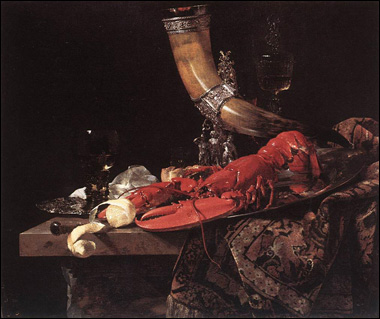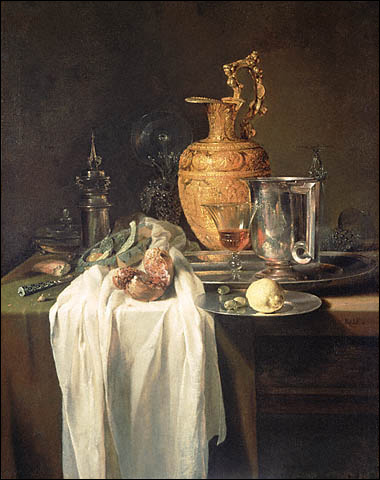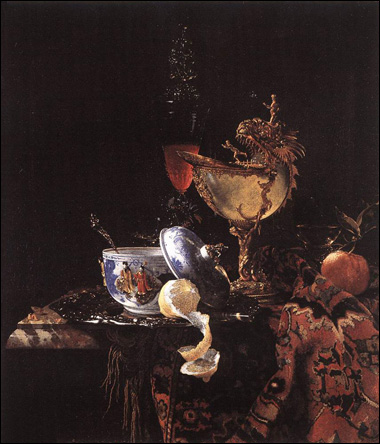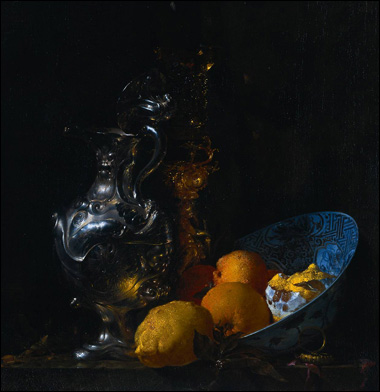Willem Kalf was a 17th century Dutch painter, known for his amazingly detailed paintings. Today he’s considered one of the greatest still life painters in all of art history.
Most of Kalf’s paintings are carefully composed images of gold or silver goblets, pitchers, and bowls; usually surrounded by various pieces of fruit and lying on ornately woven cloth.
That rich subject matter naturally appealed to the wealthy members of Dutch society in the 17th century, and his work became known as pronkstilleven, which in Dutch means, “opulent still life painting.”
Willem Kalf was born in 1619 into a fairly well-off merchant family in Rotterdam, and eventually moved to Paris to began his artistic career. His first still life paintings were much less ornate, exploring themes of simple kitchens and interiors.
Eventually Kalf progressed to painting richer subjects and moved back to the Netherlands, first to Rotterdam and then Amsterdam where he stayed for the rest of his life. He made a very comfortable living by selling his paintings to the wealthy and later on transitioned into an art collector and dealer as well.
Kalf’s subject matter certainly catered to a rich market, but that’s not the reason he chose it. No, he was just interested in studying the way light and color gleamed off of reflective surfaces.
Using deep black backgrounds for contrast, Willem Kalf became a master at painting the curved shapes of metal and glass objects, observing quite carefully each glint and flicker of light and replicating that perfectly with oil paints on canvas.
His devotion to the still life genre actually helped raise still life paintings to the same level as portraiture and figurative works. Before Kalf (and other Dutch still life artists), such paintings were considered somewhat inferior, because their subject matter was devoid of any deeper meaning.
But Willem Kalf showed that beauty alone could define art, without any need for a deeper meaning. And that’s something that needs to be remembered in the 21st century as well.
This post may contain affiliate links.




